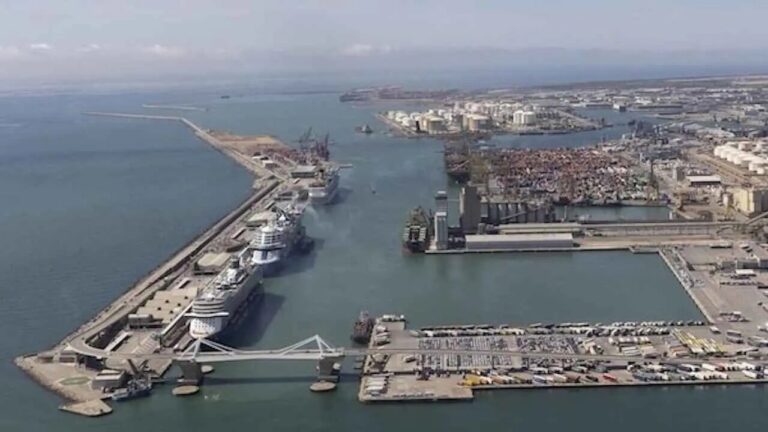Strengthening Ties: How Xi Jinping Fosters China-Malaysia Friendship
The longstanding friendship between China and Malaysia is beautifully exemplified through historical landmarks and cultural exchanges. Among these, the Poh San Teng Temple, dedicated to the famed Chinese navigator Zheng He (1371-1433), holds a significant place. This temple, along with the city of Sibu—often referred to as “New Fuzhou”—stands as a testament to the rich, millennium-old ties that bind these two nations. As China’s President Xi Jinping strives to strengthen these connections, his upcoming state visit to Malaysia is expected to further solidify this enduring partnership.
Historical Ties and Cultural Significance
During his 2013 visit to Malaysia, Xi Jinping underscored this commitment by quoting a local proverb: “Flowing water cannot be severed.” This phrase encapsulates the essence of the friendship that has flourished between China and Malaysia over the centuries. Xi’s reference to Zheng He during his Southeast Asia tour highlighted the importance of the 21st Century Maritime Silk Road, a key element of the Belt and Road Initiative (BRI).
As Xi embarks on another visit to Malaysia, both nations are set to enhance their time-honored friendship and cooperation, paving the way for a promising future in this new era.
Cooperation on the Fast Track
In Malaysia’s eastern state of Pahang, the East Coast Rail Link (ECRL) project stands as a symbol of China-Malaysia collaboration. A prominent sign reads: “Extensive consultation, joint contribution, shared benefits — building a better future.” This motto aligns with the core principles of the BRI, which has become a global framework for infrastructure and development, fostering partnerships worldwide.
- Malaysia’s Role in the BRI: As a key node along the ancient Maritime Silk Road, Malaysia was among the first to engage in Belt and Road cooperation.
- The ECRL Project: This ambitious 665-km railway is currently under construction and aims to connect Malaysia’s less developed east coast with its thriving west coast.
- Strategic Connectivity: Upon completion, the ECRL will link with the China-Laos and China-Thailand rail networks, enhancing regional trade routes.
Malaysian Transport Minister Anthony Loke Siew Fook remarked, “If that were to materialize, the ECRL would be able to tap into Thailand’s entire rail network and link with Kunming in southwestern China, via Laos.” This development highlights the potential for increased trade and passenger flow within the region.
Expanding Economic Ties
China has been Malaysia’s largest trading partner for 16 consecutive years, with trade volume reaching an impressive 212.04 billion U.S. dollars in 2024. Malaysian tropical fruits, including durian and mangosteen, have gained immense popularity among Chinese consumers.
During a meeting with Malaysian Prime Minister Anwar Ibrahim, Xi emphasized the importance of bringing more Malaysian products to the Chinese market and fostering cooperation in emerging sectors such as digital economy, artificial intelligence, and new energy.
Economist Samirul Ariff Othman noted, “The flourishing economic ties between Malaysia and China demonstrate the resilience and mutual benefits of our bilateral relationship.” He emphasized that investments in high-value sectors will further deepen cooperation.
People-to-People Connections
One remarkable story that embodies the friendship between the two nations is that of Yong June Kong, a Malaysian who donated stem cells to a Chinese boy suffering from leukemia. This act of kindness was highlighted by Xi during his 2013 visit, reflecting the deep bonds between the people of both countries.
Yong expressed his gratitude for Xi’s recognition, stating, “I never imagined that such a simple act would receive such high-level recognition.” He aspires to continue his medical career in China and act as a bridge of friendship between the two nations.
Building a Shared Future
Since establishing diplomatic ties in 1974, China and Malaysia have navigated various challenges together, including the 1997 Asian financial crisis and the 2008 global economic downturn. Their partnership was elevated to a comprehensive strategic level during Xi’s visit in 2013.
More recently, Xi and Anwar reached a consensus in Beijing to build a China-Malaysia community with a shared future, opening new avenues for collaboration.
Cultural Exchanges and Education
As the two nations celebrated the 50th anniversary of diplomatic ties, Malaysian students at Tianjin University wrote to Xi, committing to promote friendship between China and Malaysia. Xi expressed his delight in this initiative and emphasized the importance of cultural exchanges.
During his 2013 visit, Xi witnessed the signing of an agreement to establish a Malaysian branch of Xiamen University, enhancing educational cooperation. This campus has grown to include over 9,100 students from various countries, promoting intercultural communication and understanding.
As Anwar aptly stated, “Which other leader articulates the vision for the future while trying to understand civilization, values, and culture?” This highlights Xi’s approach to international relations, emphasizing the importance of people-to-people ties.
The future looks bright for China-Malaysia relations, as both nations continue to build on their historical friendship and embrace new opportunities for growth and collaboration.






